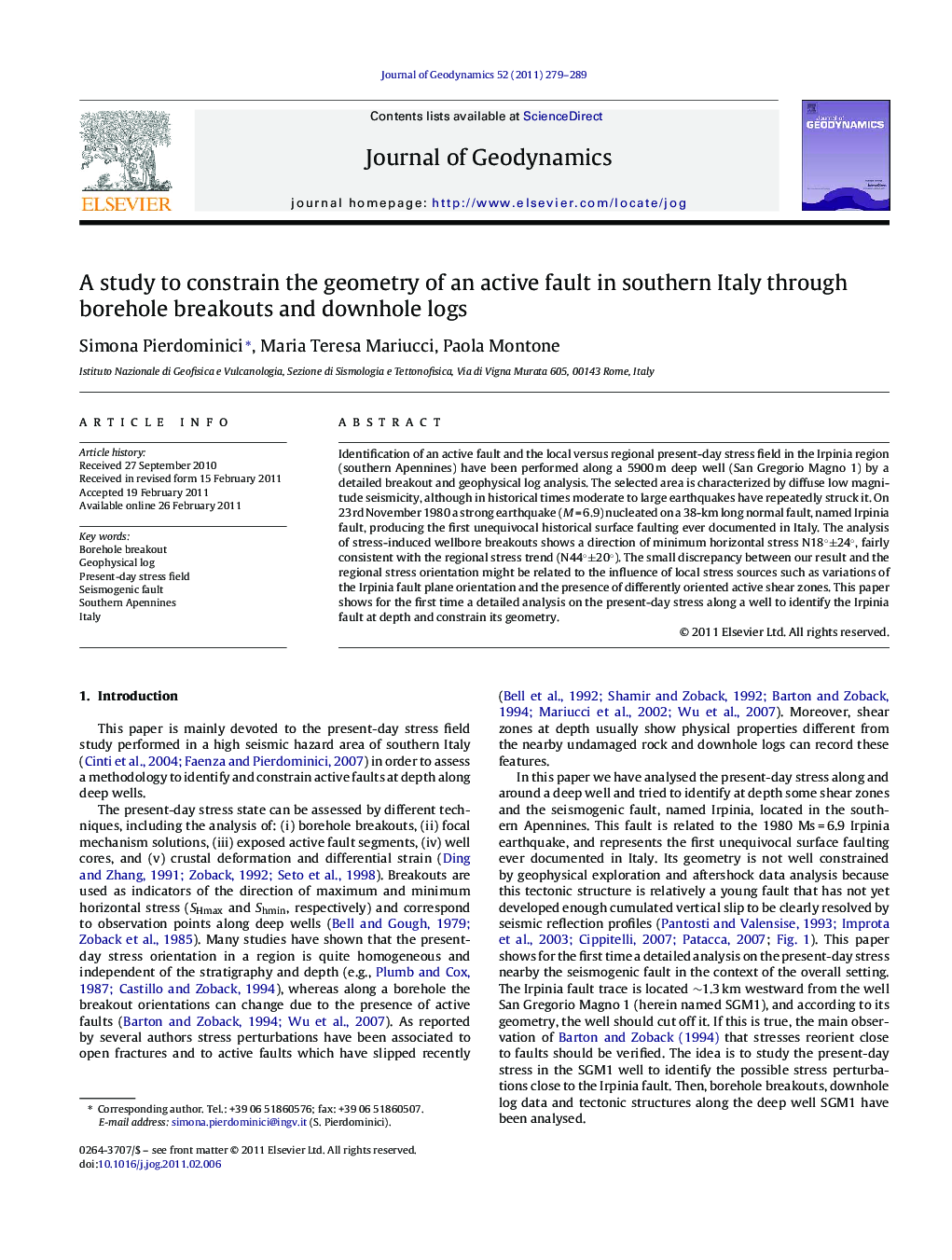| Article ID | Journal | Published Year | Pages | File Type |
|---|---|---|---|---|
| 4688463 | Journal of Geodynamics | 2011 | 11 Pages |
Identification of an active fault and the local versus regional present-day stress field in the Irpinia region (southern Apennines) have been performed along a 5900 m deep well (San Gregorio Magno 1) by a detailed breakout and geophysical log analysis. The selected area is characterized by diffuse low magnitude seismicity, although in historical times moderate to large earthquakes have repeatedly struck it. On 23rd November 1980 a strong earthquake (M = 6.9) nucleated on a 38-km long normal fault, named Irpinia fault, producing the first unequivocal historical surface faulting ever documented in Italy. The analysis of stress-induced wellbore breakouts shows a direction of minimum horizontal stress N18°±24°, fairly consistent with the regional stress trend (N44°±20°). The small discrepancy between our result and the regional stress orientation might be related to the influence of local stress sources such as variations of the Irpinia fault plane orientation and the presence of differently oriented active shear zones. This paper shows for the first time a detailed analysis on the present-day stress along a well to identify the Irpinia fault at depth and constrain its geometry.
► Horizontal stress orientations in the well are consistent with the regional trend. ► Anomalous stress orientations reveal local stress sources. ► Faults cause log anomalies in a well. ► Fault-well intersection at depth can be defined. ► Downhole logs help in defining fault geometry at depth.
